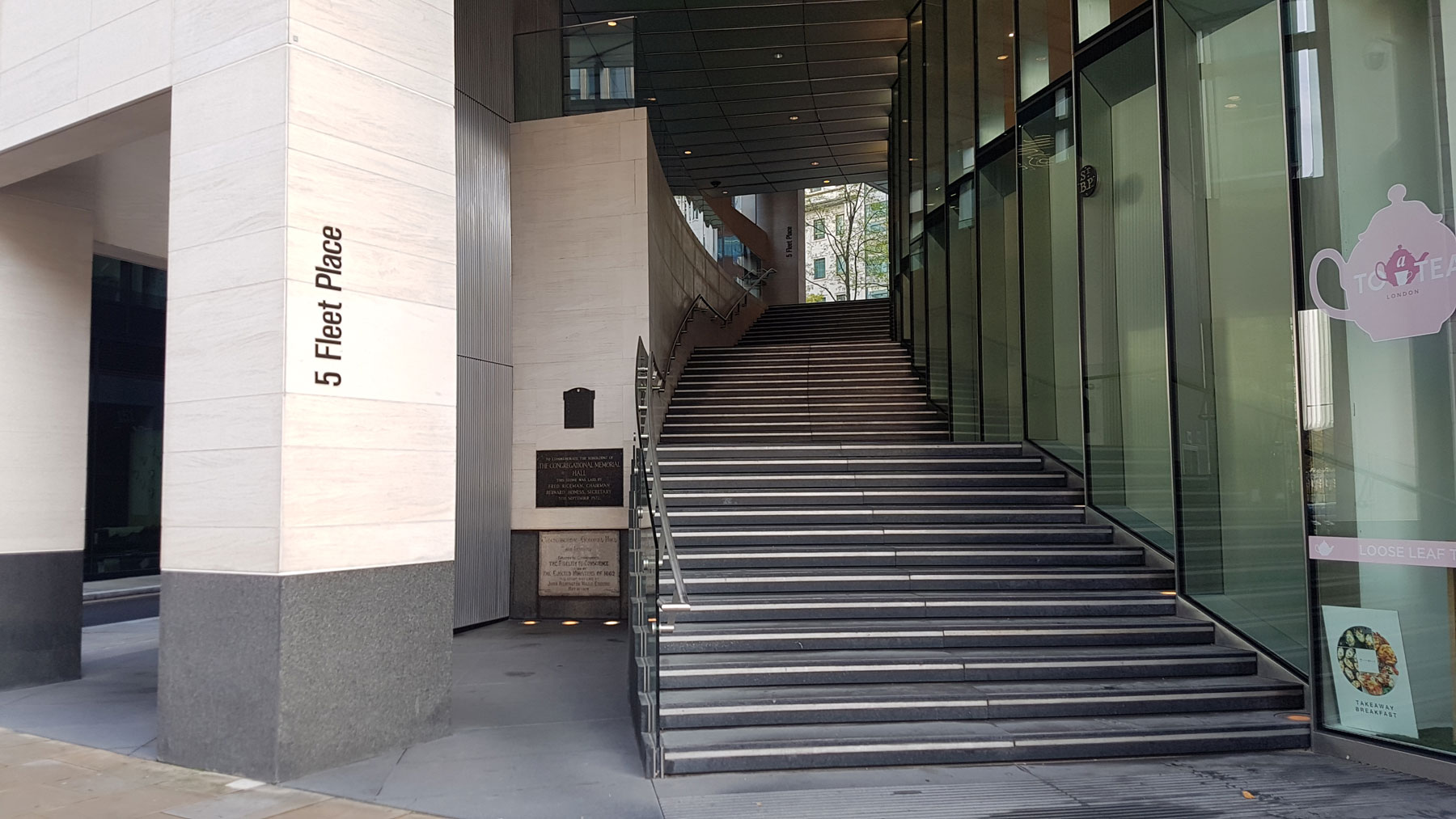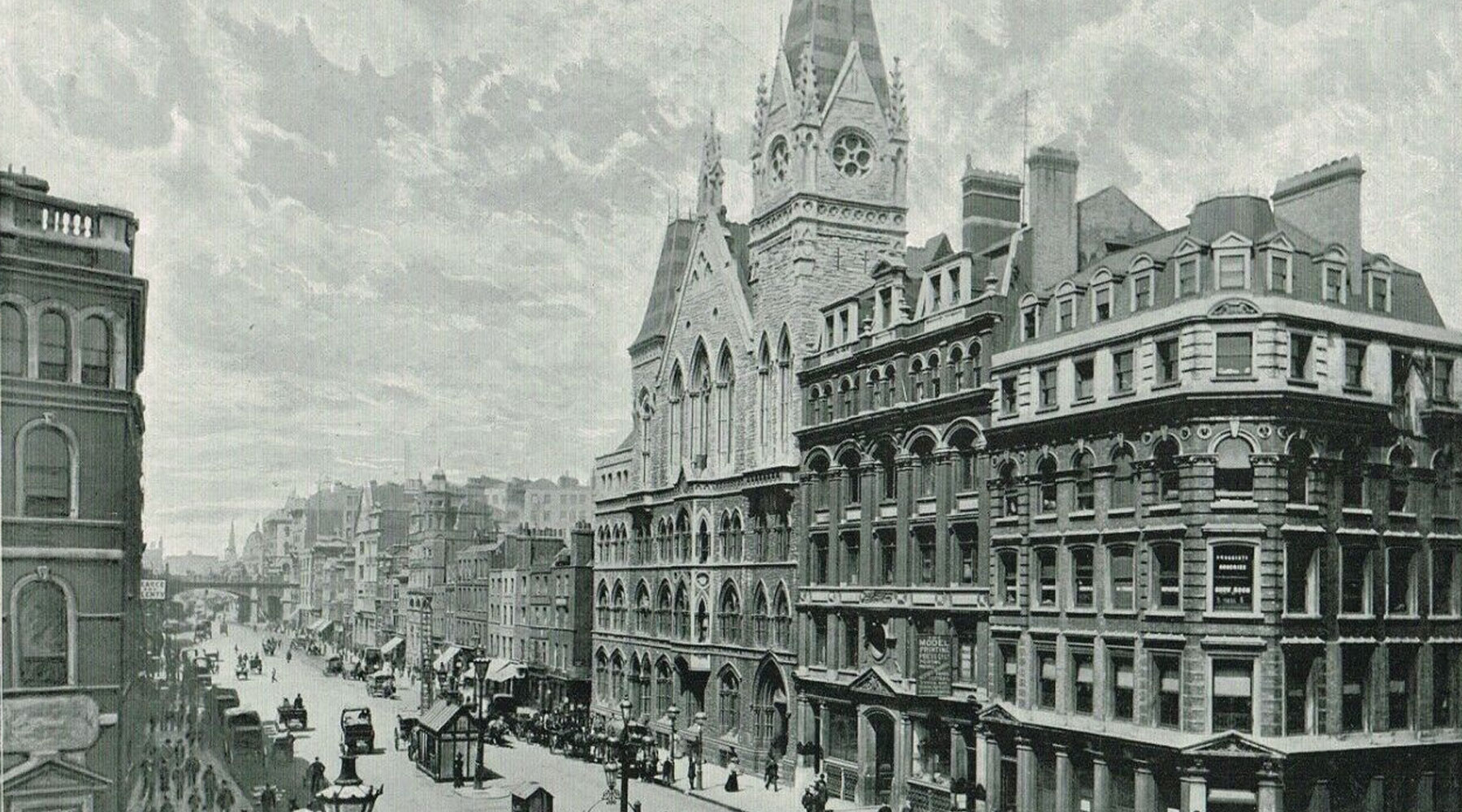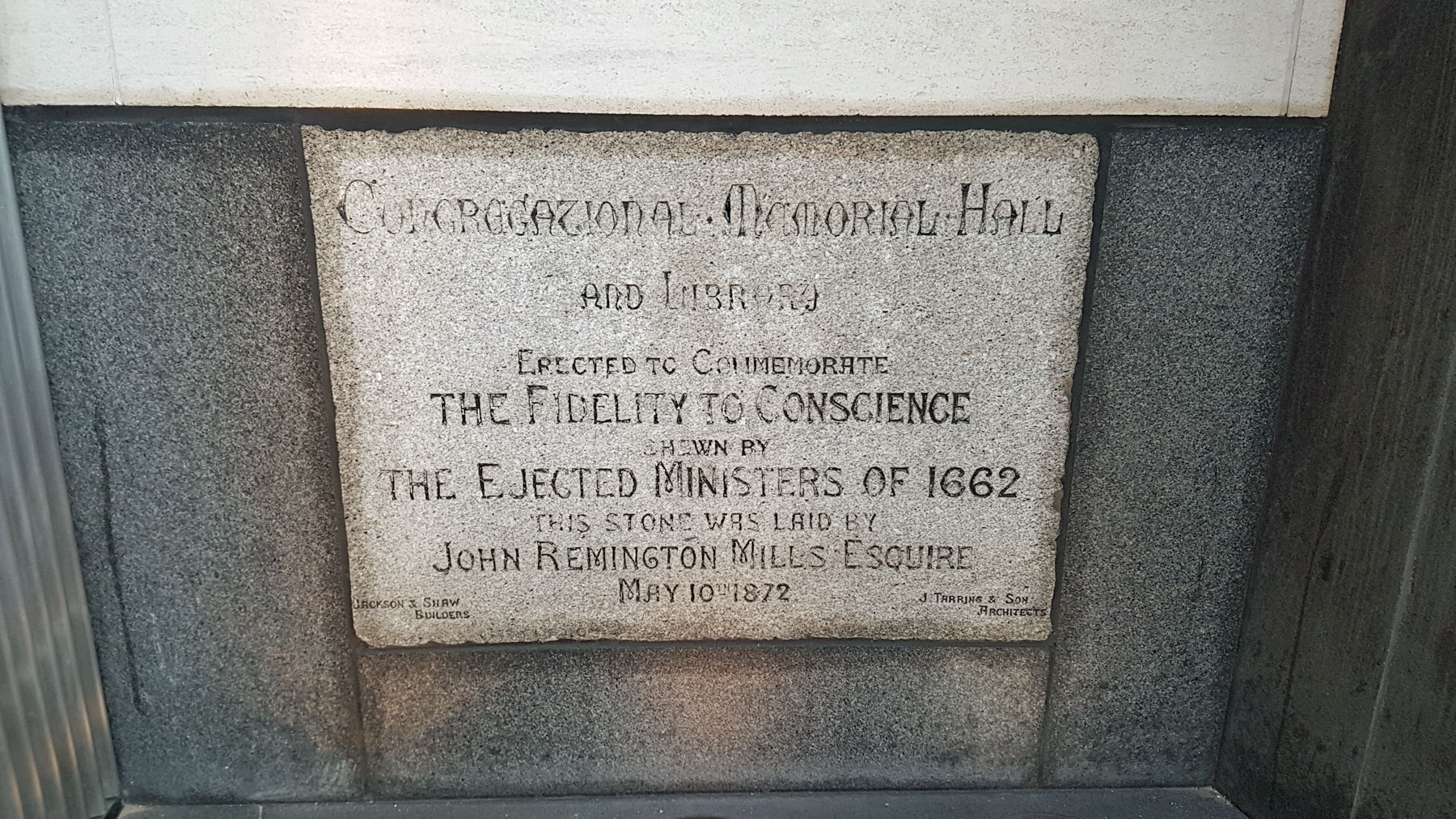A modern office block in Farringdon has three old metal plaques on the side – for this is the place where the Labour Party was founded.
This is the site of the Congregational Memorial Hall.
The Congregational Library was founded in Bloomfield Street, EC2 in 1831 and had in addition to the Library itself a number of rooms where Congregationalists and others could hold meetings. In 1872, they were able to buy a large plot of land in Farringdon, on the site of the former Fleet Prison, which had been cleared in the 1860s for the construction of the Holborn Viaduct railway station.
It was known as a “memorial” hall as it commemorated the bicentenary(ish) of the ejectment of some 2,000 ministers from their livings in the Established Church in 1662 for their religious convictions. Designed in the gothic style by the “Gilbert Scott of the Dissenters”, John Tarring, their new Hall opened in 1874, and the hall could hold 1,500 people in addition to the spaces for smaller rooms and the library.
A large hall space like this would often be hired out — and in February 1900, a meeting of many left-wing organisations was organised here and they agreed to form a single organisation to contest political elections — the Labour Party was born. Although the only connection between the Hall and the party was the founding meeting, it’s an important enough event to merit a plaque on the site.
Later, during WW2, the building was taken over by the London County Council to run a meals service, and reputedly handed it back in a very shabby state of repair. Although they tried to maintain the ageing building, the cost of restoring it proved too great and in the end, it was decided to demolish it and rebuild.
So in 1968, it was demolished to make way for a modern office block that opened in 1972, called Caroone House. The Trust occupied some of the space, while the rest was leased to British Telecom, who used it to handle a lot of their international phone traffic. Although never confirmed, it’s had occasionally been reported that the building was also a site for phone tapping by British spies.
The freehold of the site was still owned by the Congregational Memorial Hall Trust though until they sold it in 2004 so that the 1970s office could be demolished and the current building on the site constructed. Oddly, although the building has always fronted onto Farringdon Street and had its address on the street, the replacement building is known by the side street it sits next to – 5 Fleet Place.
After 2004, the Congregational Memorial Hall Trust invested the money it received from selling the old building, and it still exists supporting charity – which isn’t a bad legacy for a building that was the site of the birth of the Labour party.











